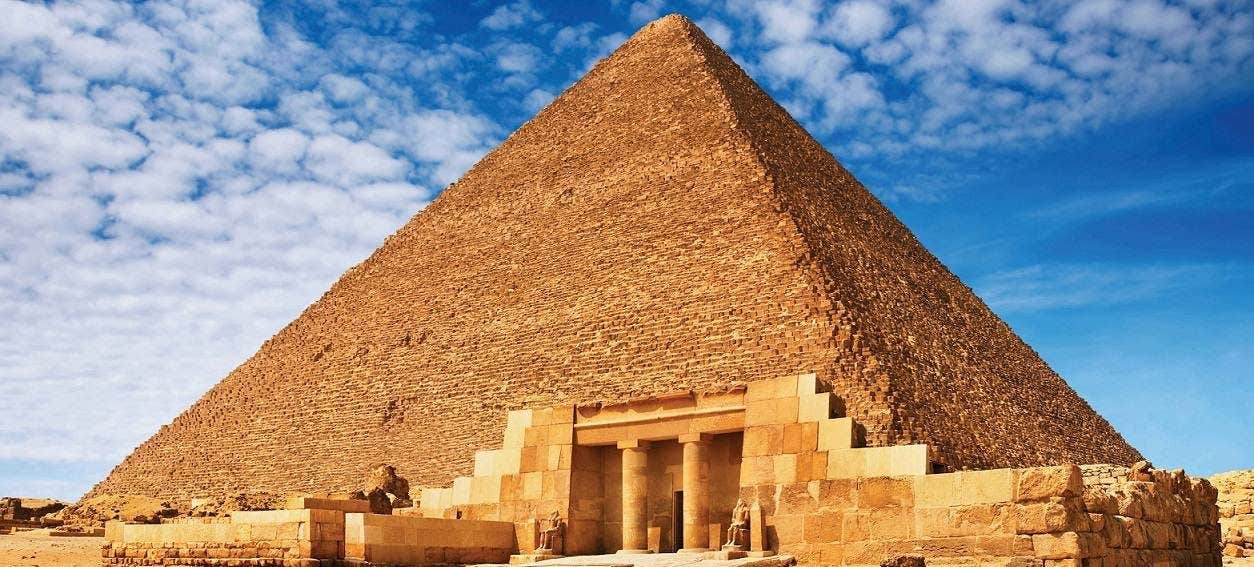New research reveals how the great pyramids of Egypt were built
How the ancient Egyptians constructed the pyramids has intrigued historians and archaeologists alike for centuries.

The Great Pyramid is composed of over 2.3 million blocks of limestone and granite, each weighing a staggering two tons. (CREDIT: CC BY-SA 3.0)
How the ancient Egyptians constructed the pyramids continues to intrigue historians and archaeologists alike. Despite advances in technology and countless studies, the question of how a civilization without modern machinery moved and assembled colossal stone blocks remains unanswered.
A recent discovery by archaeologists might finally provide some clarity. Investigating the terrain near the Great Pyramid of Giza, the team explored a long-standing theory, aiming to uncover the methods behind one of humanity's most awe-inspiring architectural achievements.
The scale of the task is almost unimaginable. The Great Pyramid alone consists of over 2.3 million limestone and granite blocks, each weighing around two tons. "It's a task that even today would require significant resources and engineering expertise," explains Dr. Laila Hassan, a prominent archaeologist. This leads to the age-old question: how did they manage it?
One intriguing clue might come from the environment itself. The research team, through an in-depth analysis of the surrounding area, posits that the Egyptians cleverly utilized the waterways around them, specifically a tributary of the Nile, to transport the massive stones to the desert.
To validate this hypothesis, researchers first had to obtain and study ancient soil samples from the Giza floodplain. This necessitated digging an impressive 9 metres (30 feet) deep, where they unearthed five fossilized soil samples. These samples were promptly dispatched to a sophisticated laboratory in France for comprehensive analysis.
The goal? To look for signs of ancient pollen and vegetation native to the Nile, evidence that would confirm the presence of an erstwhile waterway. Their persistence was rewarded when the analysis pinpointed traces of the Khufu Branch, an ancient tributary believed to have dried up in 600 BC.
Related Stories
A study published in the journal Proceedings of the National Academy of Sciences states that the former waterscape and higher river levels around 4,500 years ago facilitated the construction of the Giza Pyramid Complex.
Not only did this discovery confirm the existence of the tributary, but it also bolstered the theory that it was instrumental in transporting the stone slabs that would later become an integral part of the pyramid's construction.
Moreover, the meticulous research unearthed a biodiversity hotspot. The team identified an astounding 61 species of plants during their analysis, providing a richer picture of the ancient Egyptian landscape.
Environmental geographer Hader Sheisha, who was part of the research group, articulated the significance of this find. "Without this tributary," Sheisha explained, "it would have been virtually impossible to build the pyramids. It acted as a natural conveyor belt, easing the logistical nightmare of moving such enormous stone blocks."
The spark that ignited this groundbreaking research was a fascinating piece of papyrus discovered in the Red Sea. This historical document detailed the account of an officer named 'Merer', who was tasked with transporting limestone up the Nile to a construction site in Giza.
When Sheisha was introduced to the papyrus, it immediately caught her attention. “I was so interested because this confirms that the transport of the pyramid’s building materials were moved over water,” she said.
"Understanding more about the environment and infrastructure of that time can help decode the perplexing enigma of the pyramid’s construction,” she emphasized.
The revelation that the ancient Egyptians may have used a network of natural waterways to facilitate the movement of the pyramid's construction materials is a testament to their ingenuity.
It not only provides a plausible explanation for the construction of these wonders but also offers a captivating glimpse into the resourcefulness and adaptability of this ancient civilization.
As modern technology and techniques continue to intersect with ancient history, it's exciting to think about what other mysteries we might unravel next.
For now, though, we have a tantalizing glimpse into how the Egyptians might have accomplished one of the greatest architectural feats in human history.
Note: Materials provided above by The Brighter Side of News. Content may be edited for style and length.
Like these kind of feel good stories? Get The Brighter Side of News' newsletter.
Joseph Shavit
Head Science News Writer | Communicating Innovation & Discovery
Based in Los Angeles, Joseph Shavit is an accomplished science journalist, head science news writer and co-founder at The Brighter Side of News, where he translates cutting-edge discoveries into compelling stories for a broad audience. With a strong background spanning science, business, product management, media leadership, and entrepreneurship, Joseph brings a unique perspective to science communication. His expertise allows him to uncover the intersection of technological advancements and market potential, shedding light on how groundbreaking research evolves into transformative products and industries.



